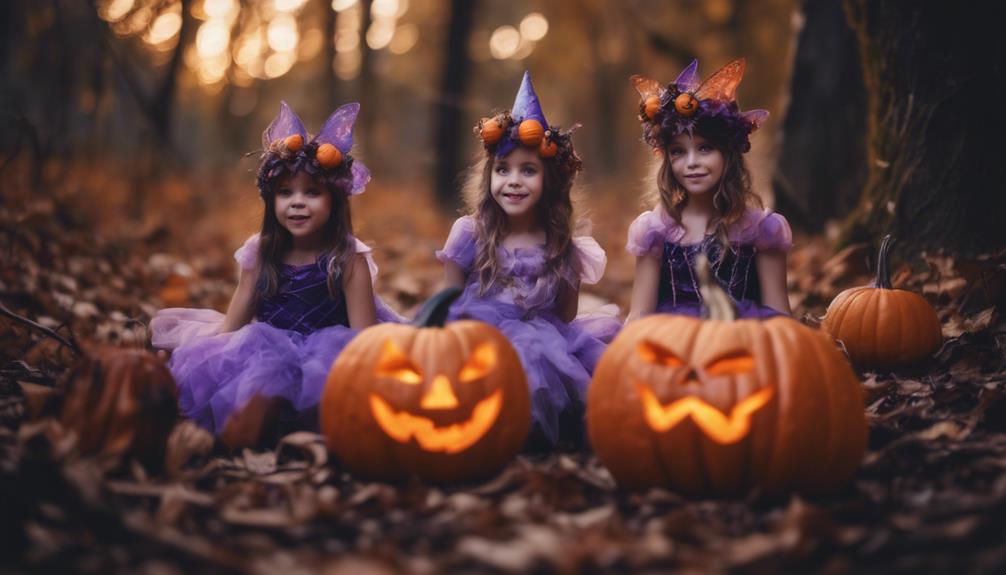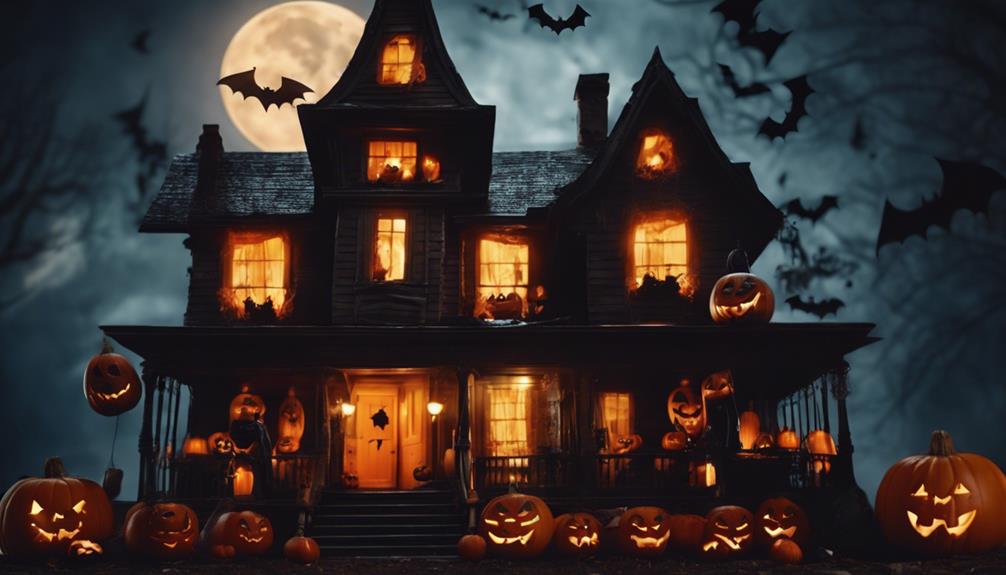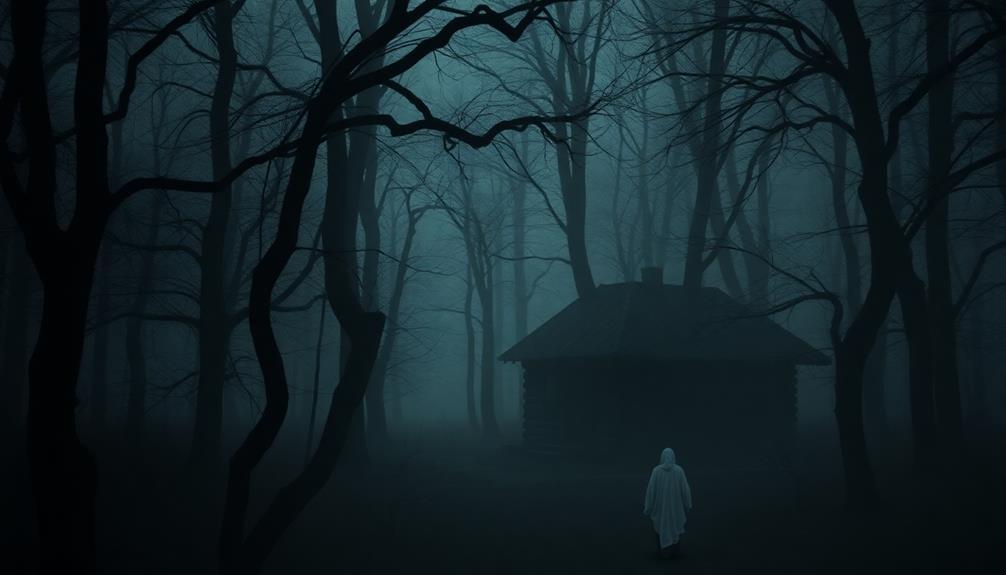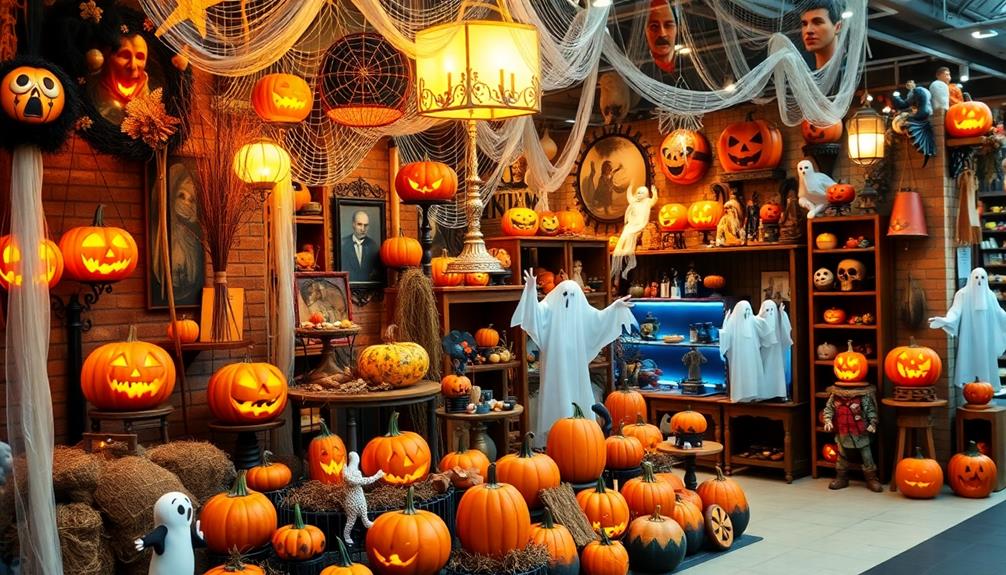The tradition of trick-or-treating has ancient roots in Celtic Samhain festivals, where people left offerings to appease spirits. During medieval times, Europeans practiced “souling,” trading prayers for treats like soul cakes. Over centuries, costumes and disguises became common, blending with cultural customs. In the United States, trick-or-treating evolved into a community activity, especially after WWII, influenced by media and marketing. If you want to explore more, you’ll discover how these ancient practices shaped today’s festivities.
Key Takeaways
- Origins trace back to Celtic Samhain rituals where offerings and bonfires were used to appease spirits.
- Medieval “souling” involved children going door-to-door for prayers and soul cakes to honor the dead.
- Wearing masks and costumes historically served to disguise or emulate spirits, blending religious and cultural practices.
- Modern trick-or-treating developed in the early 20th century, influenced by European customs and promoted by candy companies.
- Today’s festivities combine ancient traditions with pop culture, emphasizing community, costumes, and celebration.
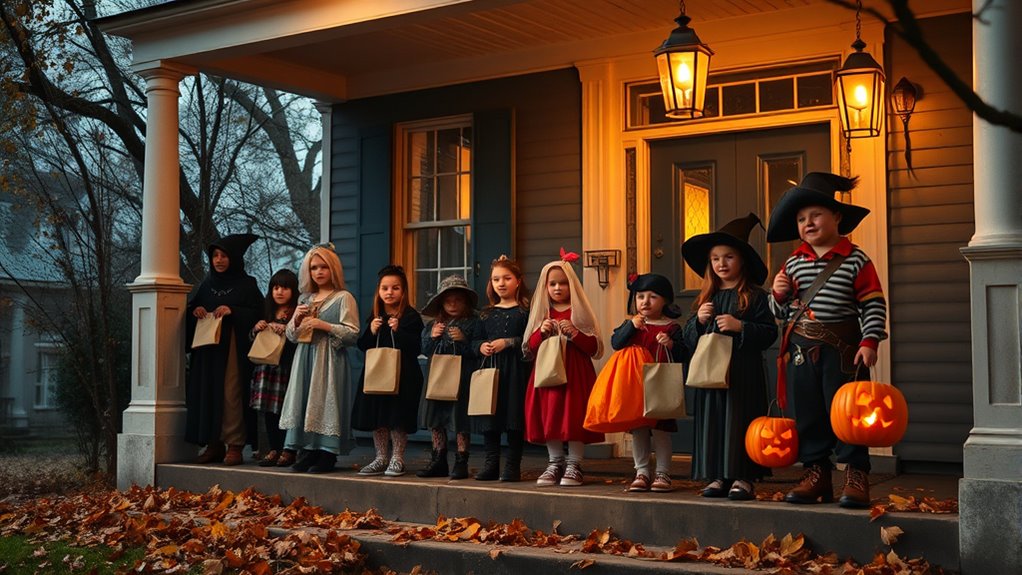
Trick-or-treating has become a beloved Halloween tradition, but its origins date back centuries and span multiple cultures. To understand this, you need to explore its cultural origins and how it has evolved over centuries. The roots of trick-or-treating can be traced to ancient practices that involved rituals, offerings, and community gatherings. In Celtic traditions, for instance, people celebrated Samhain, a festival marking the end of harvest and the beginning of winter. During this time, they believed that spirits roamed the earth, and to appease them, they left food on their doorsteps or lit bonfires. These offerings were seen as a way to ward off harmful spirits and ensure a good harvest for the coming year.
As centuries passed, these customs merged with other cultural practices. During the medieval period, the practice of “souling” emerged in parts of Europe. On All Hallows’ Eve, poor people would go door-to-door, offering prayers for the dead in exchange for soul cakes. This act of begging for treats became a way to honor the departed and was rooted in the idea of protecting loved ones from spirits. Over time, these traditions began to blend, and communities started to dress in costumes to disguise themselves from spirits or to emulate them. Wearing masks and costumes became a way to blend into the supernatural world, a practice that carried into modern Halloween celebrations.
In the United States, trick-or-treating as we know it started to take shape in the early 20th century. It was influenced by European customs, but it also evolved to fit the American context. The practice became more community-centered, with children going door-to-door to receive candy, often in disguise. The post-World War II era saw a boom in Halloween festivities, driven by the rise of suburban neighborhoods and consumer culture. Candy companies began to promote trick-or-treating as a safe, fun activity, reinforcing its popularity. This evolution over centuries reflects how the tradition has adapted to changing cultural landscapes, merging ancient rituals, religious practices, and modern festivities into a national pastime.
Today, trick-or-treating continues to evolve, influenced by media, pop culture, and local customs. Despite these changes, its core remains rooted in community, tradition, and the thrill of the costume. Understanding its cultural origins and how it has evolved over centuries helps you appreciate why it’s more than just collecting candy—it’s a link to centuries of history, blending ancient beliefs with modern celebration.
Frequently Asked Questions
How Did Trick-Or-Treating Originate Globally?
You might wonder how trick-or-treating originated globally. Its cultural influences trace back to ancient practices like Roman and Celtic festivals, blending with medieval European customs such as “souling.” Over time, these traditions merged, spreading through migration and cultural exchange. Today, trick-or-treating reflects a mix of historical origins and cultural influences, evolving into a widespread Halloween activity that unites communities worldwide in a fun, festive way.
What Are Unique Regional Variations of Trick-Or-Treating?
Oh, the global quest for the most bizarre regional customs and unique treats during trick-or-treating! You might find yourself in Japan, where kids enjoy canned coffee or rice crackers instead of candy. In Mexico, calaveritas and spicy sweets spice up the night. From colorful lanterns in the Philippines to the potato sack races in parts of the U.S., these regional variations make trick-or-treating a fascinating, tasty adventure worldwide.
When Did Costumes Become a Key Part of the Tradition?
Costumes became a key part of trick-or-treating during the early 20th century, as the costume evolution gained popularity. You’ll find that the disguise significance grew because children enjoyed dressing up to embody characters or spooky figures, adding fun and mystery to the tradition. This shift helped make trick-or-treating more festive, encouraging creativity and making costumes a central element of the celebration by the 1920s and 1930s.
How Has Trick-Or-Treating Influenced Popular Culture?
You might be surprised to learn that over 41 million Americans participate in trick-or-treating annually, shaping popular culture profoundly. This tradition influences media, with costumes and haunted houses becoming staples in movies and TV shows. Trick-or-treating’s cultural symbolism of community and fun is amplified through media influence, inspiring merchandise, themed events, and social media trends. It’s a vivid example of how a simple activity can shape and reflect cultural values worldwide.
What Are the Health and Safety Precautions Historically Taken?
You should prioritize costume safety by choosing bright, flame-resistant costumes and ensuring masks don’t obstruct your vision. Be aware of food allergy awareness by inspecting treats before eating, avoiding homemade or unwrapped candies, and carrying allergy-friendly snacks if needed. Always travel in groups, stay on well-lit streets, and use reflective accessories to boost visibility. These precautions help keep your trick-or-treating experience fun and safe for everyone.
Conclusion
Now that you know the wild, centuries-old origins of trick-or-treating, you’re part of a tradition that’s survived dragons, plagues, and even medieval superstitions. Every time you knock on a door, you’re channeling a legacy so ancient, it’s practically a superhero’s secret power. So next Halloween, embrace the magic, the history, and the thrill—because you’re not just asking for candy, you’re part of a legendary story that’s lasted longer than most civilizations!


